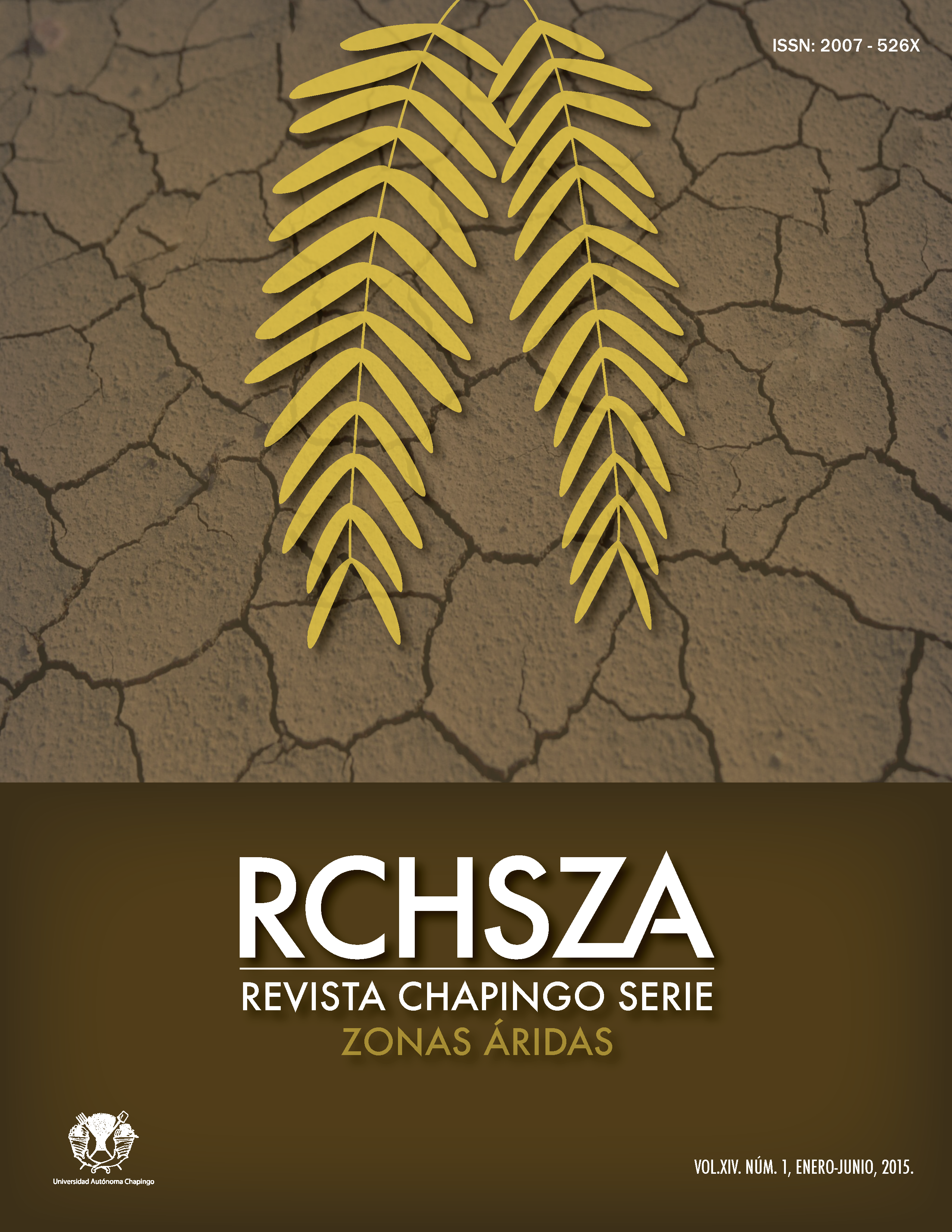Abstract
Natural resource management in arid areas as elsewhere must be supported by an appropriate analysis of the real needs of the site. The aim of this study was to identify and evaluate different natural resource management alternatives, in order to develop management options to improve the physical conditions of the soil in rangeland and, in turn, contribute to the productive activities of the population. The study was carried out in the community of Roma-Texas, located at 25° 52’ 25.83” N and 103° 43’ 33.8” W at an elevation of 1,168m. Field trips were made to identify the main natural resource problems in the area. Using the RMS Planning Tool-SWAPA, possible alternatives that could be implemented at the site were defined, while with the help of experts in the field of natural resource management and the DSS Facilitator tool, the best alternatives for helping solve the problems of natural resource management in the area were evaluated and defined. Taking into account physical, social, economic and environmental factors, the best evaluated practices for their feasibility, viability and ease of implementation were: the establishment of woody plants (Prosopis spp) and grazing species, particularly buffelgrass (Cenchrus ciliaris L.), which are able to adapt to the arid conditions of the area.
References
Alcalá G. C. (1995). Guía práctica para el establecimiento, manejo y utilización del zacate buffel. Patronato del Centro de Investigaciones Pecuarias del Estado de Sonora, A. C. Consultado en: http://www.patrocipes.org.mx/publicaciones/pastizales/P95009.php
Beltrán López, S.; Loredo Osti, C. (2002). Reconversión de áreas agrícolas marginales a praderas de pasto buffel. INIFAP. Folleto Técnico No. 36.
Beltrán López, S.; Loredo Osti, C.; Núñez Quezada, T.; Gonzáles Eguiarte, L. A. (2008). Buffel titán y Buffel regio nuevas variedades de pasto para el altiplano de San Luis Potosí. INIFAP. Folleto técnico No. 35.
García, M. E. (1973). Modificaciones al sistema de clasificación climática de Köppen: Para adaptarlo a las condiciones de la República mexicana. Universidad Nacional Autónoma de México. México, D. F.
Loredo, O. C.; Beltrán L. S.; Villanueva D. J.; Urrutia M. J. (2005). Establecimiento de pasto Buffel para el control de la erosión hídrica. Folleto Técnico Núm. 26. INIFAP-C.E. San Luis Potosí, S.L.P. 32 p.
Medina Torres, J. G.; Armijo Tamez, R.; Blanco Icazbalceta, V. (2004). Planeación de los recursos naturales de zonas áridas: un enfoque de sistemas. Agraria. 1 (2): 206-219.OECD/FAO (2012). OECD-FAO Agricultural Outlook 2012-2021. OECD Publishing and FAO.
Pedroza S. A. (2010). Desarrollo Comunitario Sustentable. Una alternativa a la crisis agroalimentaria en países en desarrollo. DR © Universidad Autónoma Chapingo. Departamento de Publicaciones de la Dirección General de Difusión Cultural y Servicio. 147 pp. doi: https://doi.org/10.13140/2.1.2004.3521
Ríos Saucedo, J. C.; Valenzuela Núñez, L. M.; Rivera Gonzáles, M.; Trucios Caciano, R.; Sosa Pérez, G. (2012). Diseño de un sistema silvopastoril en zonas degradadas con mezquite en Chihuahua, México.
Reséndez Velázquez, K. L.; Gonzáles Castillo, M.; Chairez Hernández, I.; Díaz Martínez Oscar. (2012). Aspectos biológicos, ecológicos y usos del mezquite. Instituto Politécnico Nacional.
Ruíz, T. D. R. (2011). Uso potencial de la vaina de mezquite para la alimentación de animales domésticos del Altiplano Potosino. Tesis de Maestría. Universidad Autónoma de San Luis Potosí. San Luis Potosí, México.
SEMARNAP (1997). Programa de Conservación de la Vida Silvestre y Diversificación Productiva en el Sector Rural: 1997-2000. Dirección General de Vida Silvestre. Instituto Nacional de Ecología. México. 207 p.
SEMARNAT (2008). Catálogo de recursos forestales maderables y no maderables. Árido, Tropical y templado. Recuperado de: http://www.conafor.gob.mx/biblioteca/Catalogo_de_recursos_forestales_M_y_N.pdf
Tarango A. L. A. (2005). Problemática y alternativas de desarrollo de las zonas áridas y semiáridas de México. Revista Chapingo Serie Zonas Áridas 4(2): 17-22
World Bank, (2008) “World Development Report 2008: Agriculture for Development”. The International Bank for Reconstruction and Development/The World Bank.

This work is licensed under a Creative Commons Attribution-NonCommercial 4.0 International License.
Copyright (c) 2015 Revista Chapingo Serie Zonas Áridas




